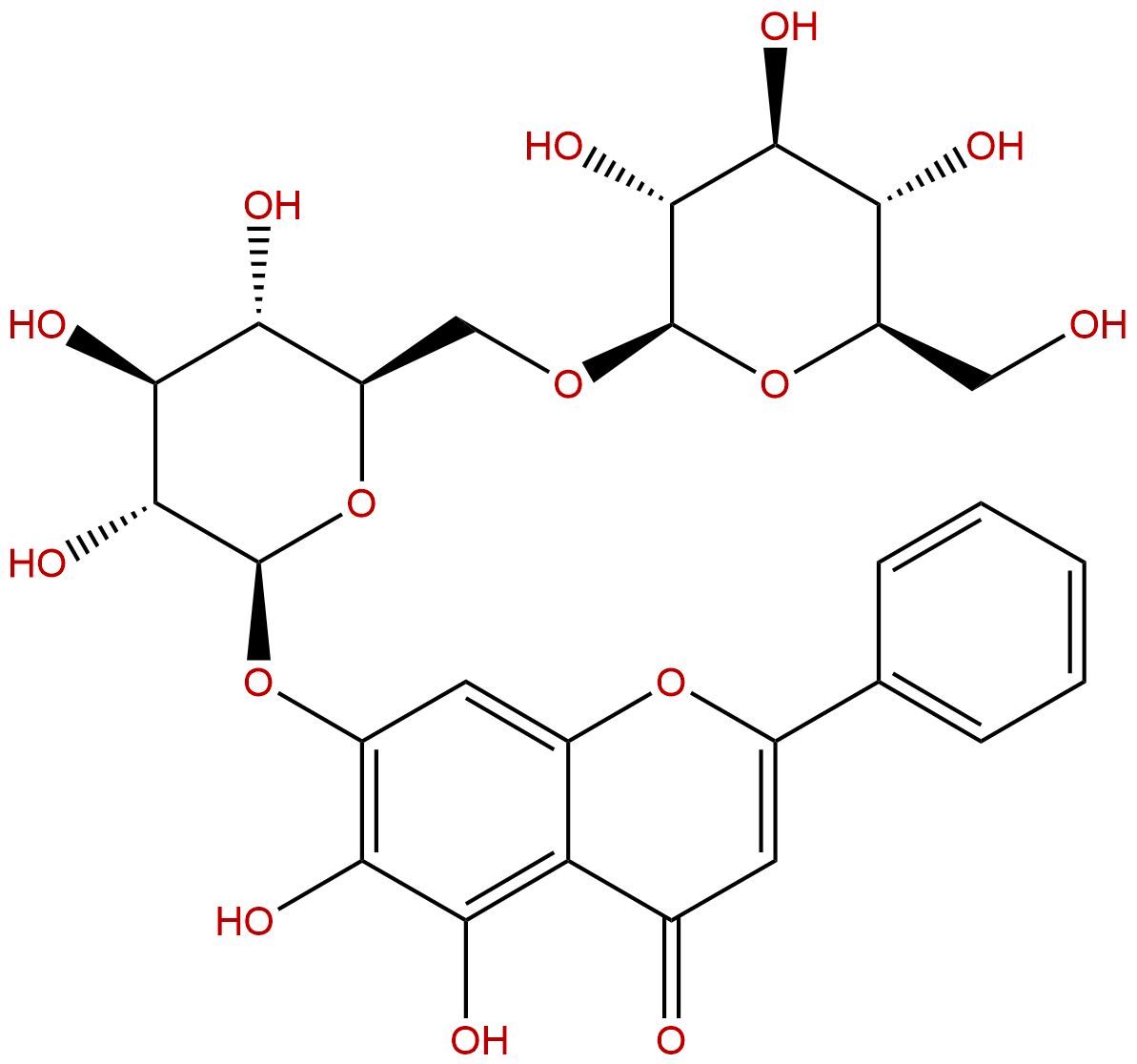
Oroxin BCAS No.:114482-86-9
|
||||||||||
 |
|
|
||||||||

| Catalogue No.: | BP1044 |
| Formula: | C27H30O15 |
| Mol Weight: | 594.522 |
Synonym name: Baicalein-7-O-diglucoside; Baicalein-7-O-gentiobioside
Catalogue No.: BP1044
Cas No.: 114482-86-9
Formula: C27H30O15
Mol Weight: 594.522
Botanical Source:
Purity: 95%~99%
Analysis Method: HPLC-DAD or/and HPLC-ELSD
Identification Method: Mass, NMR
Packing: Brown vial or HDPE plastic bottle
Can be supplied from milligrams to grams.
For Reference Standard and R&D, Not for Human Use Directly.
Inquire for bulk scale.
Description:
Oroxin B can selectively induce tumor-suppressive ER stress and concurrently inhibit tumor-adaptive ER stress in B-lymphoma cells for effective anti-lymphoma therapy.
References:
PLoS One. 2013 Nov 27;8(11):e80197.
Molecular modeling reveals the novel inhibition mechanism and binding mode of three natural compounds to staphylococcal α-hemolysin.
METHODS AND RESULTS:
In this study, we found that three natural compounds, Oroxylin A 7-O-glucuronide (OLG), Oroxin A (ORA), and Oroxin B (ORB), when inhibiting the hemolytic activity of α-HL, could bind to the "stem" region of α-HL. This was completed using conventional Molecular Dynamics (MD) simulations. By interacting with the novel binding sites of α-HL, the ligands could form strong interactions with both sides of the binding cavity.
CONCLUSIONS:
The results of the principal component analysis (PCA) indicated that because of the inhibitors that bind to the "stem" region of α-HL, the conformational transition of α-HL from the monomer to the oligomer was restricted. This caused the inhibition of the hemolytic activity of α-HL.
Toxicol Appl Pharmacol. 2015 Oct 15;288(2):269-79.
Oroxin B selectively induces tumor-suppressive ER stress and concurrently inhibits tumor-adaptive ER stress in B-lymphoma cells for effective anti-lymphoma therapy.
Cancer cells have both tumor-adaptive and -suppressive endoplasmic reticulum (ER) stress machineries that determine cell fate. In malignant tumors including lymphoma, constant activation of tumor-adaptive ER stress and concurrent reduction of tumor-suppressive ER stress favors cancer cell proliferation and tumor growth. Current ER stress-based anti-tumor drugs typically activate both tumor-adaptive and -suppressive ER stresses, resulting in low anti-cancer efficacy; hence, selective induction of tumor-suppressive ER stress and inhibition of tumor-adaptive ER stress are new strategies for novel anti-cancer drug discovery. Thus far, specific tumor-suppressive ER stress therapeutics have remained absent in clinical settings.
METHODS AND RESULTS:
In this study, we explored unique tumor-suppressive ER stress agents from the traditional Chinese medicinal herb Oroxylum indicum, and found that a small molecule Oroxin B selectively induced tumor-suppressive ER stress in malignant lymphoma cells, but not in normal cells, effectively inhibited lymphoma growth in vivo, and significantly prolonged overall survival of lymphoma-xenografted mice without obvious toxicity. Mechanistic studies have revealed that the expression of key tumor-adaptive ER-stress gene GRP78 was notably suppressed by Oroxin B via down-regulation of up-stream key signaling protein ATF6, while tumor-suppressive ER stress master gene DDIT3 was strikingly activated through activating the MKK3-p38 signaling pathway, correcting the imbalance between tumor-suppressive DDIT3 and tumor-adaptive GRP78 in lymphoma.
CONCLUSIONS:
Together, selective induction of unique tumor-suppressive ER stress and concurrent inhibition of tumor-adaptive ER stress in malignant lymphoma are new and feasible approaches for novel anti-lymphoma drug discovery and anti-lymphoma therapy.
HPLC of Oroxin B
